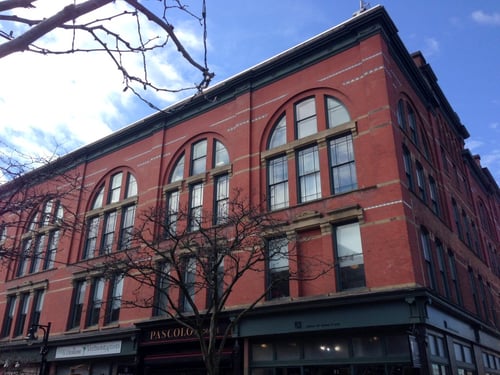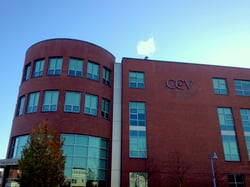Retrocommissioning Your Building for Big Savings
Cx Associates worked with the owner of the Howard Opera House building in Burlington, Vermont, and the Burlington Electric Department (BED), to address issues related to the building's aging HVAC infrastructure. The four-story building in downtown Burlington was built in 1879. Over the years, it has housed a department store, an opera house in the upper floors, and various other commercial and office spaces.

Aging HVAC Infrastructure
The current owner of the Howard Opera building contacted Cx Associates because he was interested in investigating ways to save energy; reduce building operating, maintenance, and equipment replacement costs; as well as extending the lifetime of the HVAC equipment. The existing central plant equipment was over 20 years old, but it had been well maintained. The owner worked with both BED and Vermont Gas to identify several areas for improvement for the aging system. BED has been a leader in energy efficiency, providing building owners with smart incentives to make efficiency improvements to their facilities. The owner then contracted Cx Associates to act as the owner's representative and commissioning agent to develop, manage and commission the energy improvements for this building. We worked with the owner to develop a detailed cost/benefit analysis for each measure, including taking into account any utility incentives.
After this evaluation, the main focus of this project was the replacement of the controls and the variable frequency drives on the central plant pumps. These measures provided immediate savings. They also enabled the owner to identify and program further energy saving measures, and identify equipment maintenance issues through trending of equipment performance.
Project Benefits
- Central Plant BMS Control. The Building Management System (BMS) controls the central plant cooling and heating systems. It was programmed to operate and monitor critical control points such as water temperatures and pressures, pump speeds, and equipment start/stop commands efficiently and effectively.
- Terminal Heat Pump Control Valves. These control valves will be controlled by the operation of their respective terminal heat pump. When a space’s temperature is satisfied, the heat pump will shut off and this new control valve will shut the water to the heat pump off. This enables the building’s central circulation pumps to sense the reduced demand and reduce their speed.
- VFD on Central Circulation Pumps. Two 20HP circulation pumps circulate the conditioned water from the central plant to the building terminal heat pumps. A variable frequency drive (VFD) will enable these pumps to modulate based on the load of the building. As all systems are designed for peak load conditions which occur extremely few hours per year, these pumps will operate at lower speeds for the majority of the operating hours.
- VFD on Cooling Tower Pumps. Two 20HP pumps circulate the water between the central plant heat pumps and the cooling tower. As described above, a VFD on these pumps will enable them to operate at slower speeds during the numerous hours when loads are less than peak design conditions.
- Ventilation Unit Start/Stop Controls. There were four ventilation fans in the building that operated 24/7 all year. Installing BMS controls on these fans enabled them to be programmed to operate only for the hours the tenant occupies the space (less than half the operating hours before the measure was installed).

To find out how much money these measures saved, click here for a detailed case study of this project.


